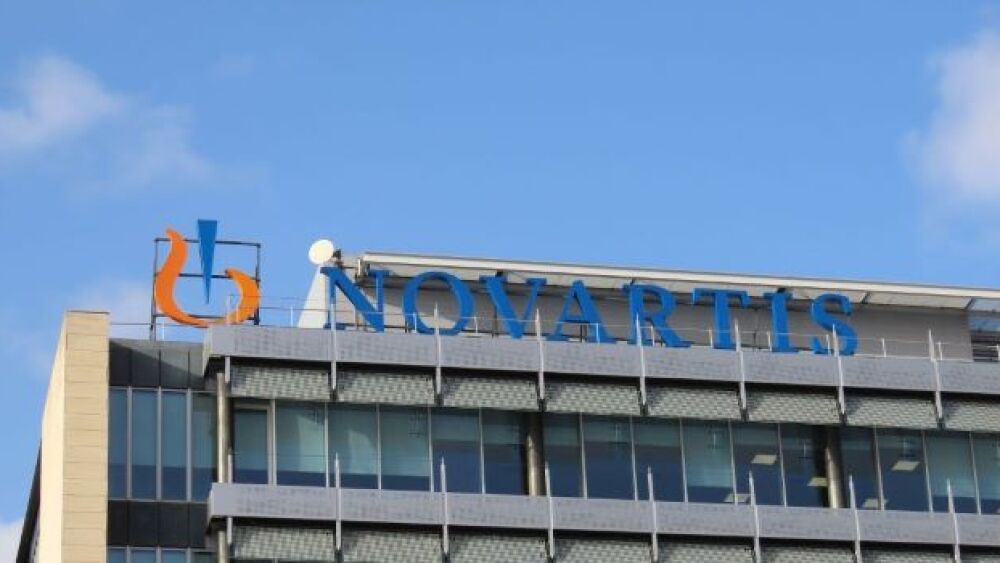Although the data was preliminary from a Phase Ib trial, investors are already speculating that the drug - when and if it makes it to regulators - could compete with Amgen’s Lumakras (sotorasib).
Cristina Arias/Cover/Getty Images
Novartis presented promising early clinical data for its JDQ443, a KRASG12C inhibitor, at the American Association for Cancer Research (ACCR) annual meeting. Although the data was preliminary from a Phase Ib trial, investors are already speculating that the drug - when and if it makes it to regulators - could compete with Amgen’s Lumakras (sotorasib).
Lumakris was approved by the U.S. Food and Drug Administration under an accelerated approval pathway in June 2021. It is the only FDA-approved treatment for adults with KRAS G12C-mutated locally advanced or metastatic non-small cell lung cancer (NSCLC) who have received at least one previous systemic therapy.
Novartis’ data from the KontRASt-01 trial demonstrated that JDQ443 had anti-tumor activity, high systemic exposure at the recommended dose and a favorable safety profile. KRAS mutations are the most common cancer drivers in NSCLC, which is the most common form of lung cancer. The most common KRAS mutation is G12C. Novartis’ drug inhibits this mutated version of KRAS “in a structurally distinct way, trapping KRAS G12C in a GDP-bound, inactive state while avoiding direct interaction with H95, a recognized route for resistance.”
“After decades without a breakthrough, we as an industry are entering a transformative era in targeted treatment for KRAS-mutated cancers,” said Jeff Legos, executive vice president, global head of Oncology & Hematology Development at Novartis.
He went on to say, “But challenges remain, in particular drug resistance. We believe that JDQ443 may have the potential for overcoming such challenges. Today’s preliminary data are an encouraging signal that we are on the right path as we continue to investigate single-agent and multiple combination strategies designed to enhance efficacy of G12C targeted therapy and improve outcomes of patients with KRAS G12C-driven cancers.”
Novartis also, for the first time, presented at AACR data about its targeted protein degradation platform. DKY709 is a potential first-in-class “molecular glue” protein degrader. It is engineered to target the zinc finger transcription factor Helios (IKZF2). The data presented was from a study of the drug in advanced solid tumors both as a monotherapy and with its experimental anti-PD-1 antibody spartalizumab.
In the KontRASt-01 Phase Ib/II trial of JDQ443 in advanced solid tumors with KRAS G12C mutation, including NSCLC and colorectal cancer, the data presented showed 57% confirmed overall response rate (ORR) at 200mg in NSCLC, 45% confirmed and unconfirmed ORR across all doses in NSCLC, and 35% confirmed ORR across all doses in NSCLC.
Investors are tending to view Amgen’s Lumakras as a first-generation KRAS inhibitor, and hope that Novartis’ approach will provide better response rates than the typical 35% to 40% range seen with other KRAS inhibitors. Lumakras, for example, in its Phase II CodeBreak 100 trial, demonstrated an ORR of 36% and a disease control rate of 81%. There was a median duration of response of 10 months, and Lumakras was the first KRAS G12C to demonstrate progression-free survival, with a median of 6.8 months.
Although Novartis’ preliminary early-to-mid-stage data would suggest an improvement over the ORR, these are not head-to-head trials, so comparisons aren’t very reliable at this point.
Each year, about 2.2 million people are diagnosed with lung cancer, 84% of which are NSCLC. Approximately 66% of NSCLC patients have advanced or metastatic cancer at initial diagnosis, two-thirds with lung adenocarcinoma with a driver mutation. KRAS G12C is the most prevalent driver mutation in NSCLC, with about 13% of non-squamous NSCLC patients in the U.S. harboring that mutation.





